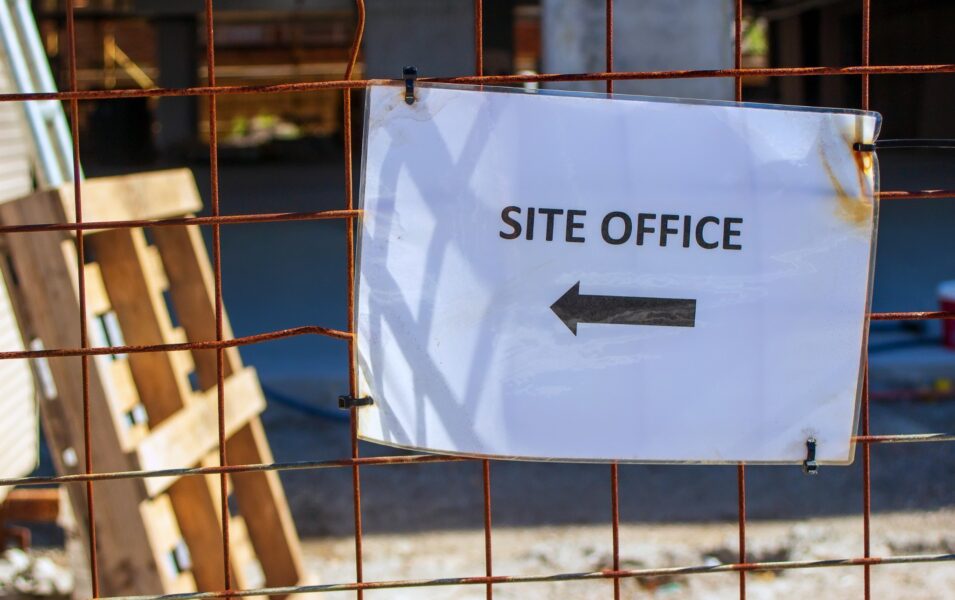Why Site Managers Shouldn’t Rely on DIY Signage and Print
Not all site risks come with flashing lights. Some start quietly—with a sign that’s too small to read, a notice that’s fallen off the fence, or a warning scribbled in a rush and ignored. These minor oversights can lead to significant problems.
It might seem harmless enough. But these shortcuts can create real problems—confused workers, missed safety warnings, and, in some cases, serious non-compliance issues. As any site manager knows, all it takes is one incident or one visit from the HSE to throw a whole job into chaos.
Professional signage isn’t about being flashy. It’s about being clear, consistent, and covered.
If the signs do their job, you can get on with yours.
Clear and Planned Signage Saves Time and Prevents Mistakes
DIY signs are nearly always done in a rush. They’re too small. They’re handwritten with a Sharpie marker or, worse, something even less legible.
They’re taped to posts or flapping from hoardings. And worst of all, they’re easy to miss.
It’s how deliveries end up in the wrong place, subcontractors enter restricted zones, or someone misses a safety warning they should’ve seen.
Many of these issues can be prevented by simply having proper signage in place from day one.
That’s where working with people who specialise in printing for building companies makes a difference. Instead of wasting time replacing soggy printouts or patching up handwritten signs, you start with proper kit—built for the weather, built for the job.
Compliance Isn’t Optional—And DIY Won’t Cut It
Health and safety signage isn’t just good practice—it’s a legal requirement.
The HSE expects to see specific warning symbols, colour codes, and phrasing in place at all times.
DIY signs miss the mark entirely.
They may be put up with the right intentions, but without proper design and visibility, even important messages can go unnoticed.
Fail an inspection, and your site could be shut down until it’s put right. And if an accident were to happen in the meantime, the consequences would be far more serious.
Most, if not all, contractors today understand the value of proper signage—it’s essential for running a safe and professional site.
The trouble starts when someone cuts a corner, assuming one small makeshift notice won’t matter.
But it does.
That’s why many site managers turn to print specialists who understand the standards and deliver signage that’s clear, compliant, and ready to go.
Durable Signage Means Fewer Distractions
Let’s be honest; there’s enough to deal with on-site without having to babysit the signage.
But that’s exactly what happens when signs aren’t built to last.
One gust of wind and it’s gone. A bit of rain and it’s unreadable. Corners peel, ink streaks, and now you’re explaining to someone what the sign used to say.
It’s a waste of your time—and a risk to everyone else.
Proper signage stays in place, remains legible, and stays out of your way. It does the job once and keeps doing it, regardless of whatever the weather throws at it.
Materials matter here:
- Correx for quick, tough site boards
- Foamex for clean-looking indoor or sheltered areas
- Dibond for long-term, all-weather durability
- Laminated or waterproof prints for noticeboards, schedules, or rotating info
Reliable signage means fewer interruptions, fewer replacements, and fewer moments where you’re pulled away from managing the work that actually needs managing.
A Final Word on Standards
Everyone on site is watching. Subcontractors, clients, inspectors—they all take clues from what they see the moment they arrive.
If the signage is clear, consistent, and up to spec, it tells them everything else probably is, too. However, when it appears patched together or half-thought through, it raises questions—and rightly so.
It’s not just about safety. It’s about confidence. In the job. In the team. In the way the site is run.
That’s why we don’t treat signage as an afterthought. Our printing services for building companies are built to support high standards, not patch them up. Get it right once, and let the signs do the talking.
Final Thoughts
An A4 printout on a gatepost won’t last the morning – and that’s if you’re lucky, even if you laminate it.
Worst of all, it’s highly likely that it gets ignored. Everyone knows it’s a bodge, including the people it’s meant to warn.
DIY signage may seem like a quick fix, but it often causes more problems than it solves. It wastes your time, severely undermines your standards, and gives the wrong impression to anyone walking on-site.
Professional signage clears all that noise. It’s visible. It’s durable. And it works—day in, day out, without needing to be fixed, replaced, or explained.
At Fineline, we help site managers who are serious about running a tight ship. Signs that hold up. Messaging that’s clear. And one less thing to chase.
If you’d like to find out more, please get in touch here.

